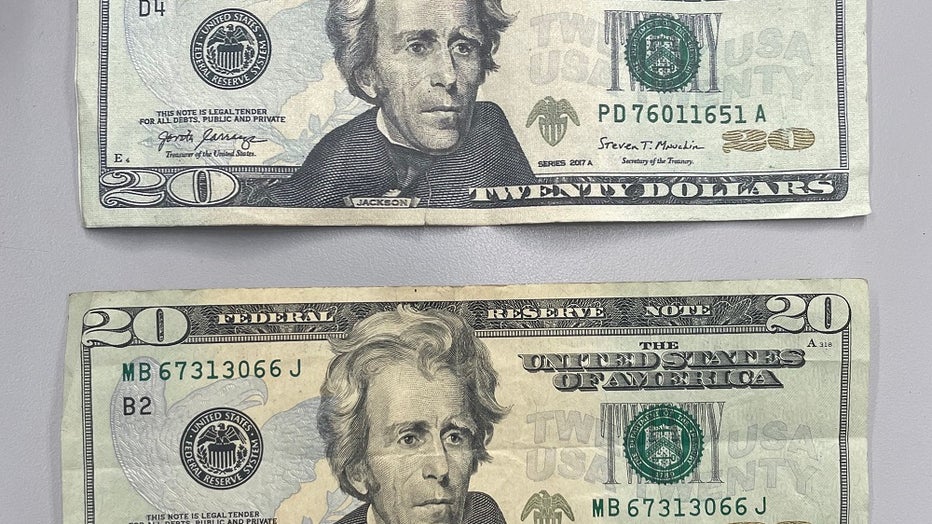Open Opportunities: Where to Locate copyright Money available for sale
Open Opportunities: Where to Locate copyright Money available for sale
Blog Article
Explore the Uses of Funny Money in Artistic Creations and Theatrical Performances
Funny money, commonly associated with deceptiveness and illegality, holds a strange allure when it finds its means into the world of theatrical performances and imaginative developments. Its background is loaded with complex stories that have influenced artists to integrate these reproductions into their jobs. From the aesthetic arts to the remarkable phase, copyright currency has been utilized in intriguing manner ins which test assumptions and provoke idea. As we explore the complex uses funny money in these innovative domain names, we begin to uncover a globe where credibility and replica blur, prompting us to question the very nature of worth and representation within art and performance.

Historic Relevance of Funny Money in Art
The historical importance of funny money in art is a facility and interesting topic that sheds light on the crossway of imagination, subversion, and socio-political discourse. Throughout history, artists have made use of copyright cash as a tool for difficult societal norms, examining the value of currency, and making effective declarations regarding riches and power.
Among one of the most noteworthy examples of funny money in art go back to the Dada activity of the very early 20th century - copyright money for sale. Artists such as Marcel Duchamp and Hannah Höch included copyright right into their jobs to slam the capitalist system and explore the principle of value in a rapidly changing world
In addition, during times of financial instability or political turmoil, funny money has been used by musicians as a kind of objection or disobedience. By developing and flowing phony money, artists have actually been able to interfere with the status, challenge authority, and provoke vital conversations about the duty of money in culture.
Impact of Imitation Money on Visual Arts
By including phony cash right into their works, artists provoke conversations on the nature of worth, credibility, and societal assumptions of wide range. The usage of fake cash in art additionally raises honest factors to consider pertaining to the limits of creative expression and the ramifications of reproducing legal tender. In general, the influence of copyright money on visual arts is diverse, boosting crucial reflections on the crossway of money, art, and societal worths.
Significance and Definition in Theatrical copyright Displays
Making use of staged fake display screens, artists utilize symbolic representations to convey deeper significances and evoke thought-provoking analyses within the realm of efficiency art. Through the unification of imitation money in staged productions, developers can discover motifs such as greed, power, corruption, and the illusion of wide range. Making use of phony currency on phase can function as a metaphor for social problems, economic differences, and the frailty of financial systems.
In staged performances, the symbolic value of funny money prolongs past its financial worth. It can symbolize the deceitful nature of appearances, the pursuit of materialistic needs, and the effects of dishonest behavior. By using funny money as a go to my blog prop, musicians can test target markets to question truth meaning of riches and the ethical borders that individuals might go across in its quest.
Ethical Considerations being used Funny Money for Art

One major honest factor to consider is the possible legal repercussions of using copyright in art. Counterfeiting money is prohibited in most nations and can bring about serious effects for artists who purposefully incorporate copyright bills into their work. copyright money for sale. This not only places the artist in danger but also questions concerning promoting illegal activities via art
In addition, there is a moral issue regarding the authenticity of the artwork itself. Making use of funny money obscures the line between fact and imitation, possibly deceiving viewers and endangering the integrity of the artistic item. Musicians must take into consideration whether making use of funny money straightens with their worths and imaginative objectives, weighing the potential influence on their online reputation and credibility.
Future Patterns in Funny Money Integration
Thinking about the advancing landscape of artistic expression, the consolidation of funny money in creative jobs might witness a shift towards ingenious and intriguing opportunities. As artists proceed to push boundaries and discover brand-new mediums, funny money can progressively be used to test social norms, examine the worth of currency, or make effective statements concerning riches and consumerism.
One future fad in phony money assimilation could be its utilization in immersive art installments where target markets are encouraged to connect with the pieces, obscuring the lines in between fact and illusion. Furthermore, developments in technology may my latest blog post bring about the development of hyper-realistic funny money that is virtually equivalent from real money, opening opportunities for much more complex and thorough art work.
Furthermore, partnerships in between artists and counterfeiters can result in distinct items that incorporate conventional imaginative techniques with the craftsmanship of developing funny money. Nevertheless, ethical factors to consider surrounding the legitimacy and principles of using funny money in art will certainly proceed to be a factor of contention as these future trends unravel.
Verdict
In verdict, the usages of copyright money in staged performances and creative productions have a lengthy background and continue to be a source of motivation for musicians. The integration of fake cash in art is likely to continue evolving in the future.
Overall, the impact of phony money on visual arts is multifaceted, boosting essential reflections on the crossway of cash, art, and societal values.

In final thought, the usages of copyright money in artistic creations and staged performances article have a lengthy background and continue to be a resource of motivation for artists. Ethical factors to consider have to be taken into account when utilizing phony money for imaginative purposes. The assimilation of copyright cash in art is most likely to proceed evolving in the future.
Report this page